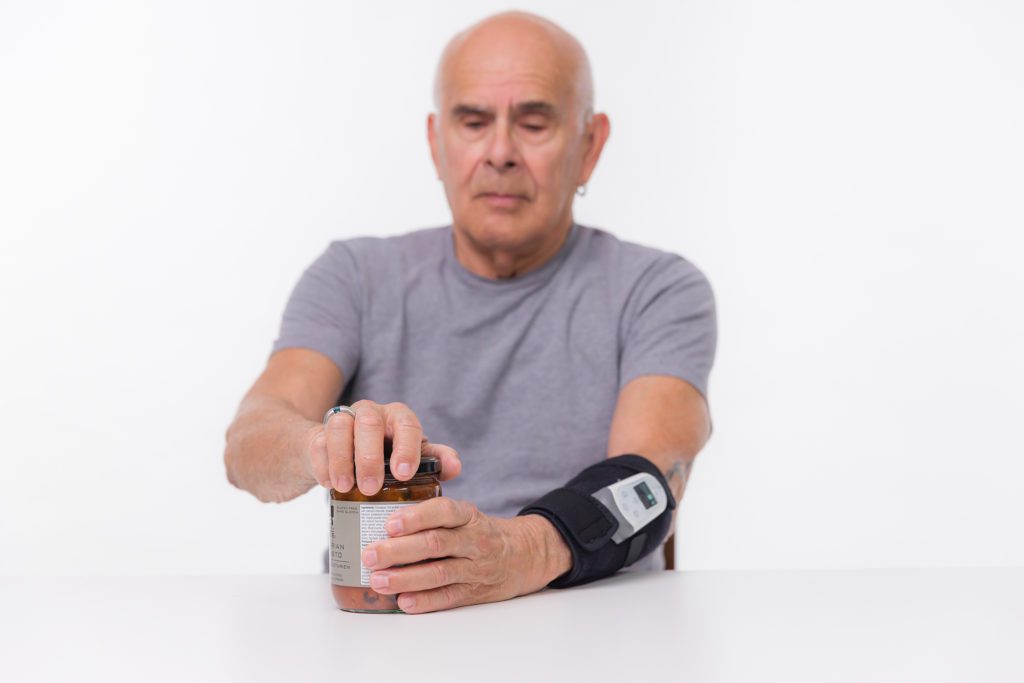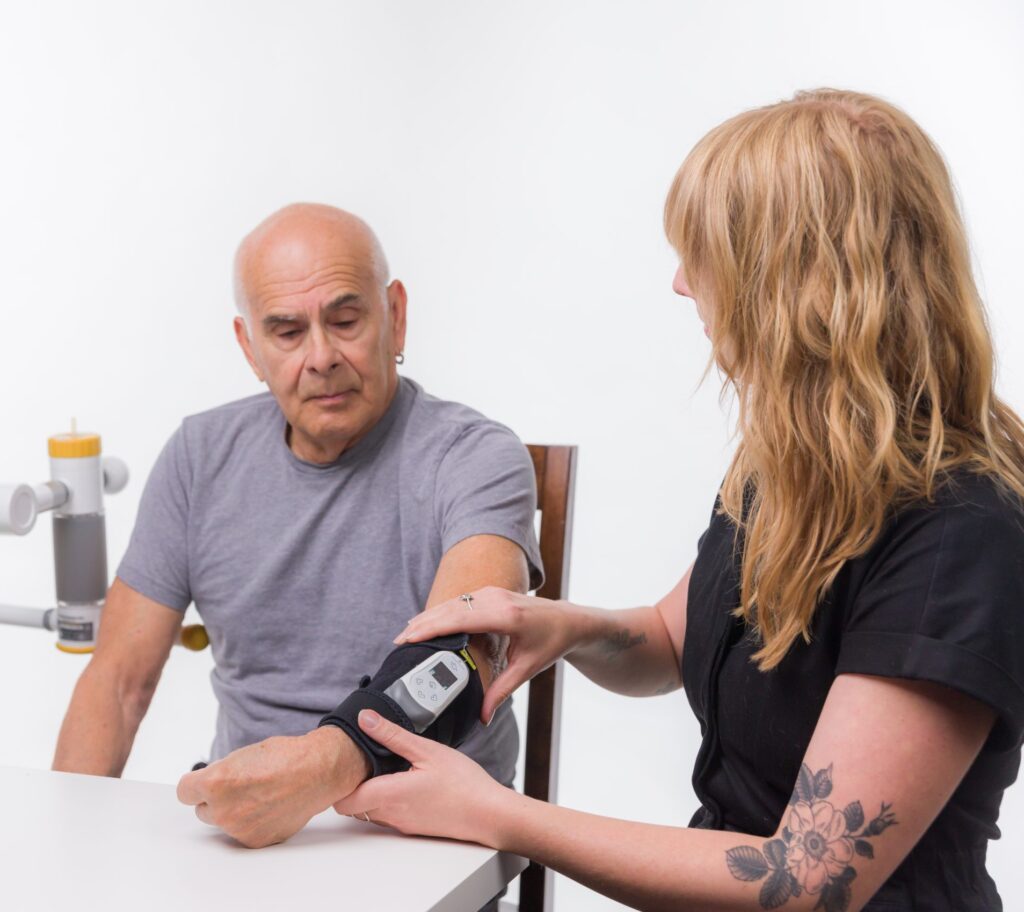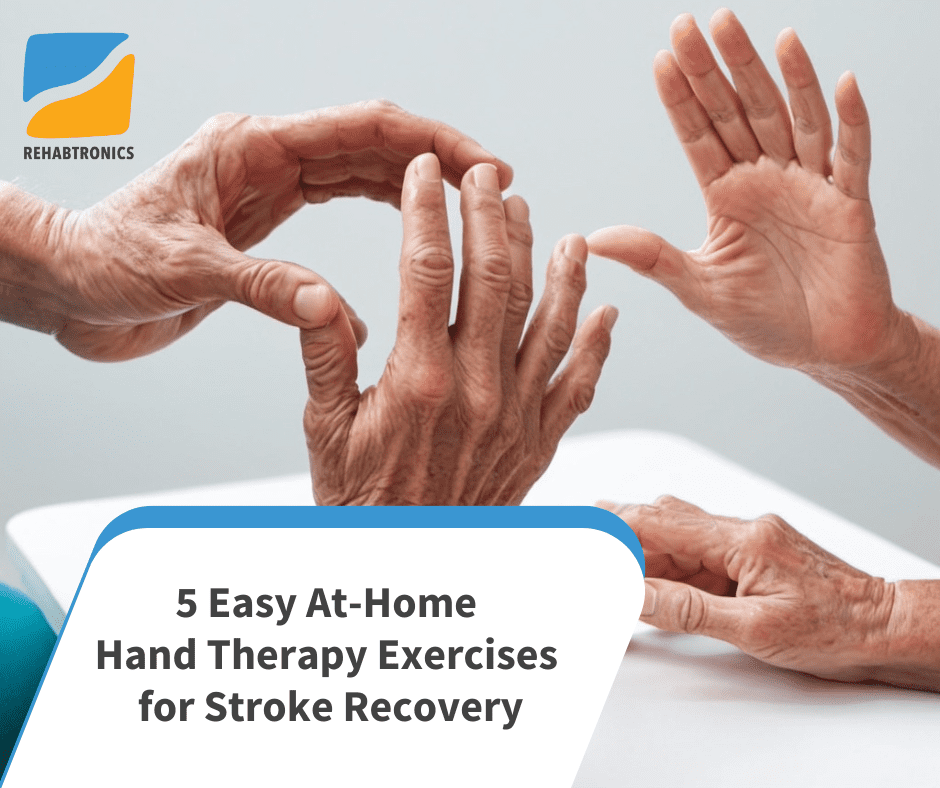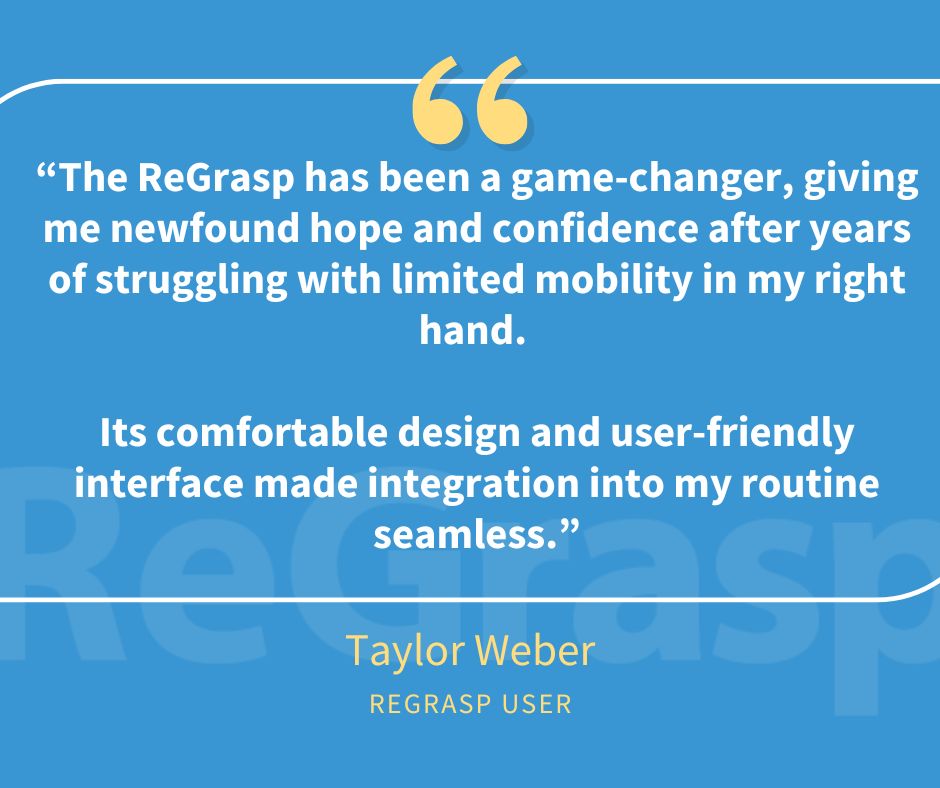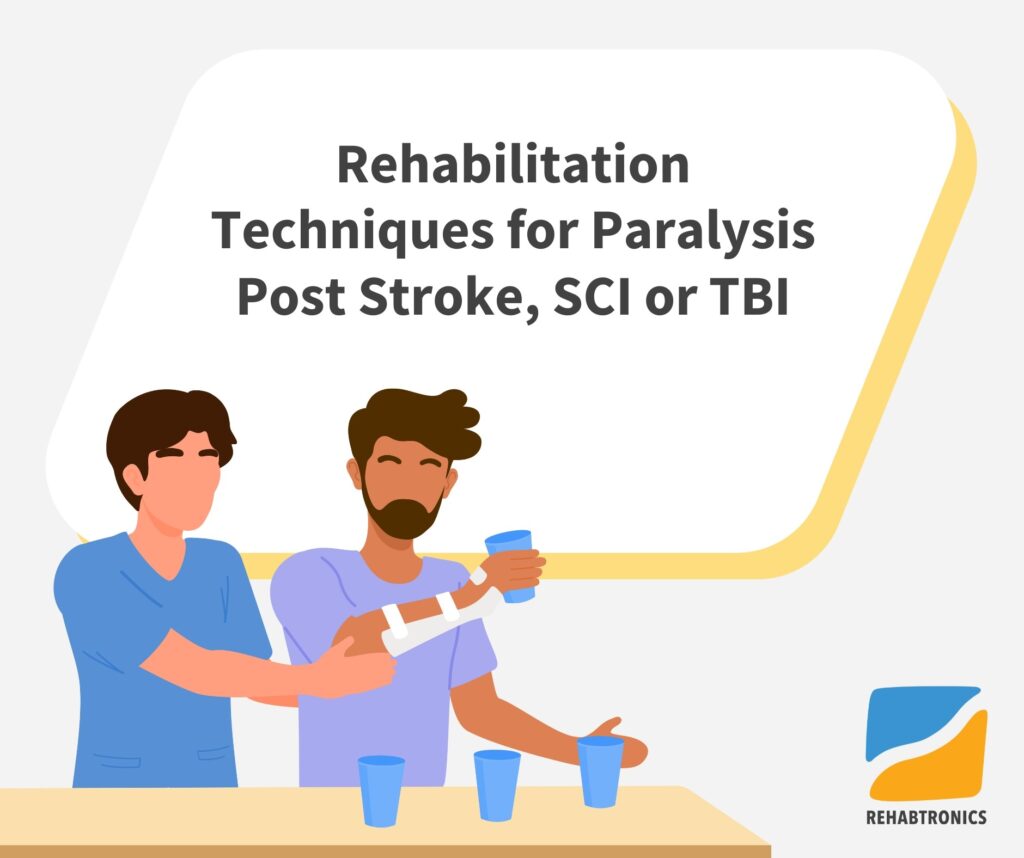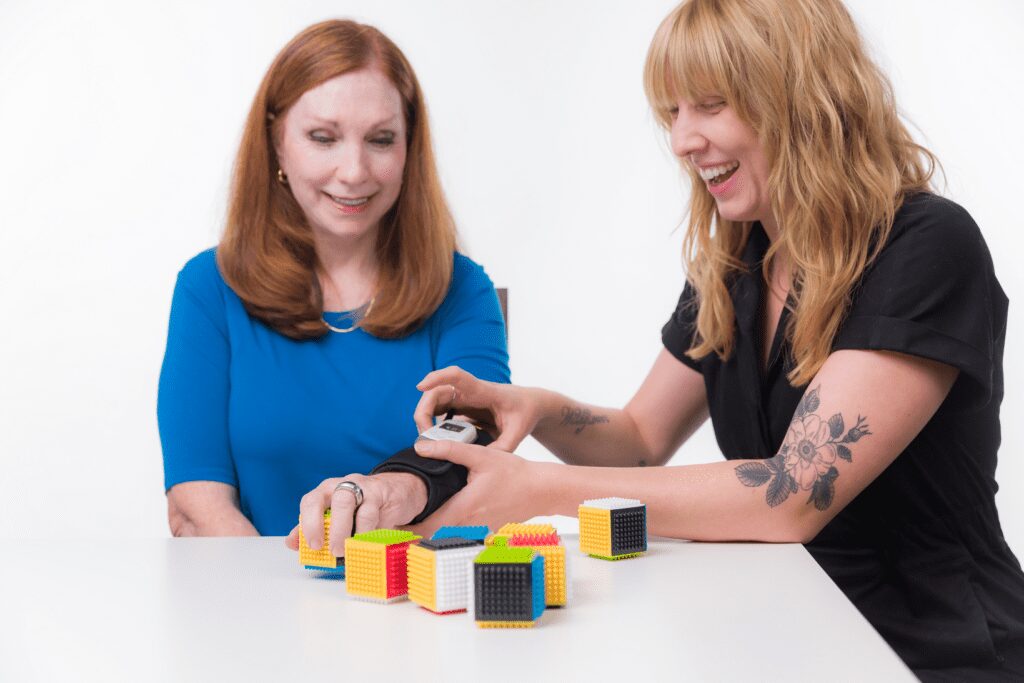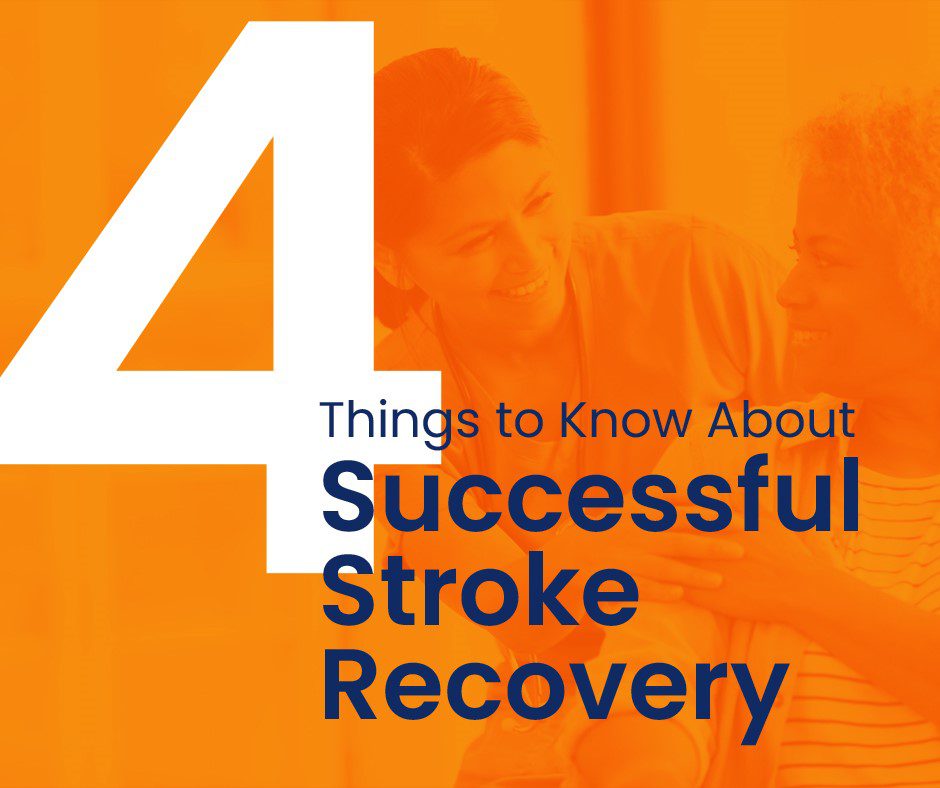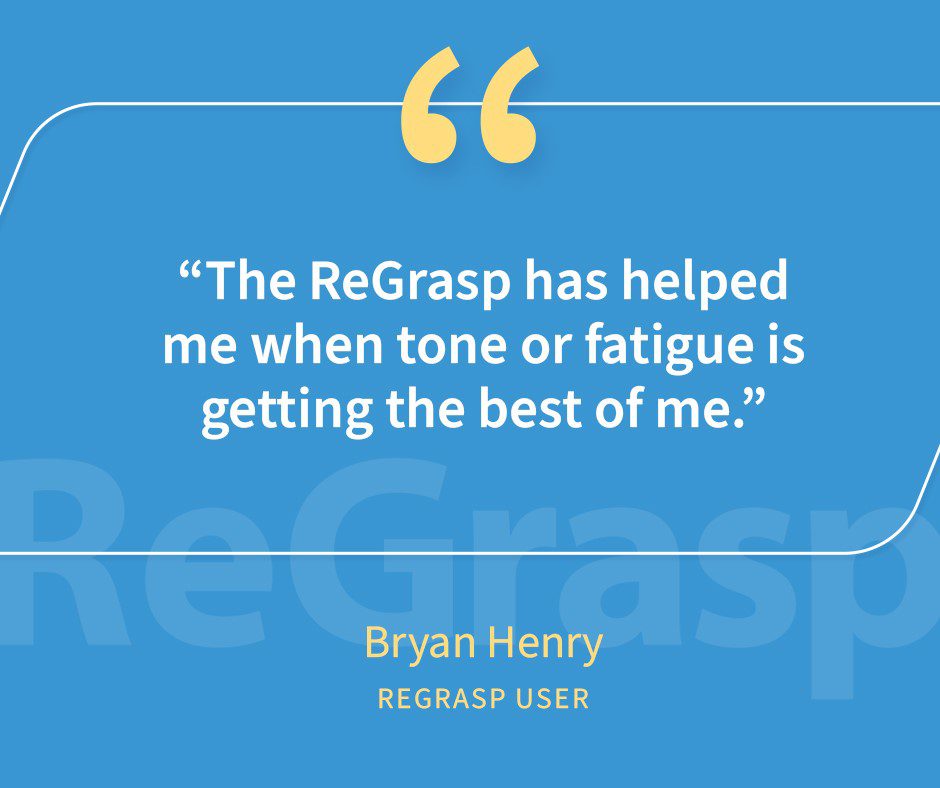ReGrasp Bionic Glove: An Innovative Way to Achieve Independence After a Stroke or Injury
In preparation for introducing the ReGrasp Bionic Glove in the United States, we worked with Ashley Gatewood, OTR/L, Home Health Therapist to test the product and provide feedback. Ashley has become an advocate to enable patients to use ReGrasp Bionic Glove at home. Read on to learn what she has to say about her experiences and her research into the effectiveness of Functional Electrical Stimulation to help patients recover from stroke or injury. Read more about Ashley’s feedback on the ReGrasp bionic glove here: Home Help Therapist Uses ReGrasp FES Device for Stroke Recovery (rehabtronics.com)
Rehabtronics is paving the way to delivering better functional rehabilitation to patients in their home or in a clinical setting. The ReGrasp bionic glove by Rehabtronics is a slim fitting, comfortable, functional electrical stimulation (FES) device that gives patients the ability to increase their independence during activities of daily living (ADL) following a stroke or injury.
The ReGrasp’s FES unit is programable and enables clinicians to set up functional home exercise programs (HEP) and to devise protocols for the patient to use the glove as a functional device to help them perform daily tasks.
The ReGrasp bionic glove incorporates a wireless earpiece that enables patients to control and operate the glove with simple and subtle head movements to open and close their hands while performing daily tasks. For example, patients use ReGrasp to pick up items, peel an apple or sweep a floor.
The ReGrasp is a low-profile device – patients are able to wear it without bringing attention to themselves when out and about in the community.
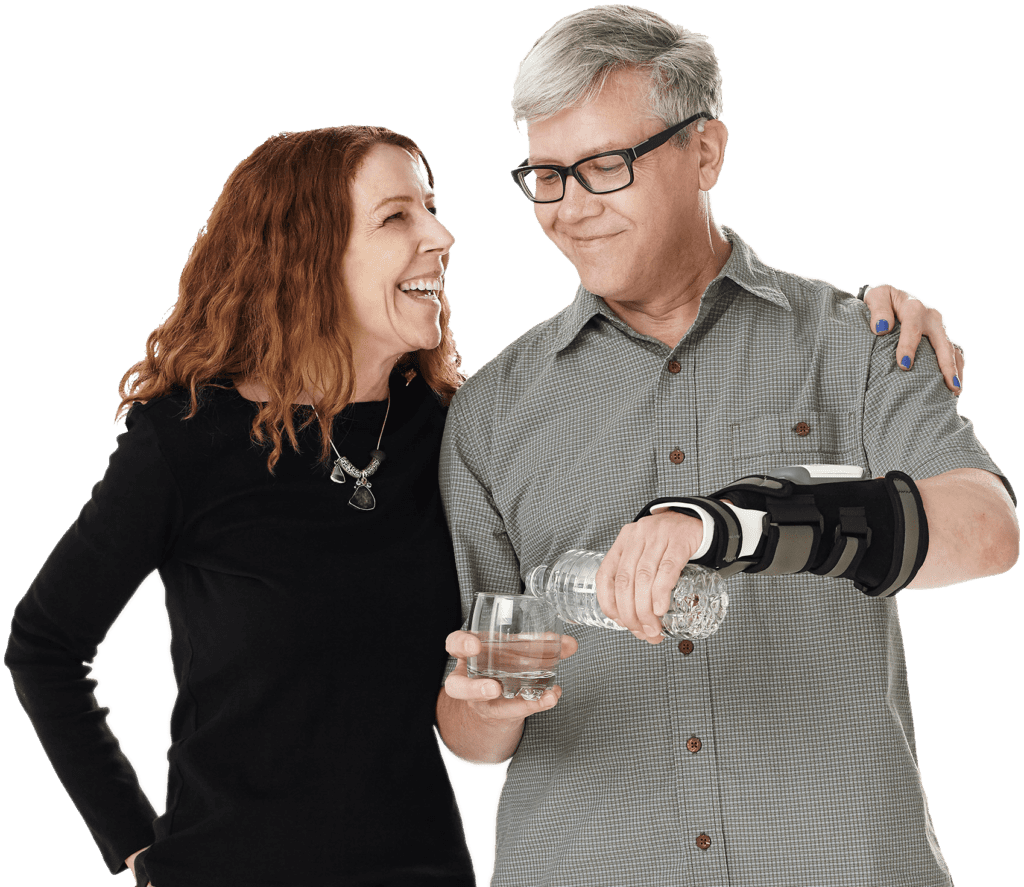
“The best part of using the ReGrasp bionic glove is that I have control of when to engage the stimulation and when to turn it off,” says Bryan Henry, Stroke Survivor and ReGrasp user. “It has helped me pick things up from the table, wash dishes, sweep, or just open my hand when tone or fatigue is getting the best of me. The exercise programs are easy to use anytime. I love my ReGrasp! It’s good to have anywhere you are. I never leave home without mine.”
Who is the Right Candidate for at Home FES therapy using ReGrasp Bionic Glove?
Once a patient, who has suffered a neurological event, has been discharged to home, it can be difficult for them to continue to receive the intense therapy that is needed for recovery. FES can be a catalyst for improvement in the subacute stages of recovery from a cerebral vascular accident (CVA), as well as the chronic stages. Research has shown that it is possible additional afferent stimulation may trigger the remaining plastic capacity for sensorimotor reorganization in the brain and promote functional recovery in chronic stroke (Peurala et. al., 2002).
How does FES Help with Rehab?
FES provides deep stimulation to the musculature to create a contraction. FES also allows an individual to increase repetitions and intensity of motor practice for individuals with hemiplegia. This starts the process for strengthening the muscles within the forearm and hand to help produce grasp and release. FES provides assistance to help increase sensory awareness of the hand after being damaged from a neurological event. A combined modulation of voluntary movements, proprioceptive sensory feedback, and electrical stimulation plays an important role in improving impaired sensory-motor integration by power-assisted FES therapy. (Molina-Rueda et al., 2013).
FES has been found to help reduce spasticity secondary to creating a fatigue reaction within the muscles, allowing overactive musculature to relax so patients can elicit true movements. We see that FES is being used with a wide variety of neurological diagnosis such as CVA, Brain injury, spinal cord injury (SCI), Multiple Sclerosis (MS), and other sensory impairments. Therapeutically, electrical stimulation is used to help decrease spastic contractions in spinal muscles, increase voluntary movements in paralyzed muscles, and increase strength in dysfunctional muscles that are affected by stroke, spinal cord injury, and head injuries (King, 1996). So having a device that a patient can use at home during functional tasks, can help provide multi-sensory input to help increase cortical reorganization within the brain.
Neuroplasticity is the foundation on which clinicians base their treatments when treating a patient with a neurological diagnosis. It’s the term to describe the ability of the human brain to adapt to environmental pressure, experiences, and challenges of daily life. It occurs at many levels from the molecules to the cortical reorganization/remapping aspect of our brain. Learning after a neurological event is dependent upon neural plasticity because large portions of the brain are devoted toward production of skilled movements. The main purpose of FES is to assist the patient to increase repetitions and intensity, to improve function, and to retrain the brain.
Patient Example: Kathy’s case scenario
A 44-year-old individual with a history of MS and left CVA was seen for recovery from COVID-19. This patient was able to utilize the ReGrasp independently to regain strength in her right hand. This individual had residual weakness in her right arm and hand due to her MS exacerbation and the effects of the CVA. She also had difficulty with endurance due to COVID-19, which decreased her breathing and left her unable to perform many daily tasks.
The patient’s goal for therapy was to be able to make meals for her family and be independent with her ADLs. The patient was able to use the ReGrasp device throughout functional tasks such as putting dishes into the cabinet, holding onto spoons to stir pasta, performing dressing tasks with increased dexterity. Kathy used the earpiece to engage the device, prompting opening and closing of her hand with use of simple head movements.
Kathy primarily used the ReGrasp device to increase her grasp when performing functional tasks. Throughout the use of the ReGrasp, Kathy was very engaged and wanted to use the device throughout the day because she saw the difference it made. After using the device for 3 times a week for 2 weeks, Kathy was able to increase her strength in her right wrist flexors and extensors on the Manual muscle test score from -4/5 to a 4/5. She also increased right grip strength by 2 lbs. The device was very motivating for the patient and gave her increased motivation to engage in her home exercise program.
Results like this point to the multi-functional capabilities that the ReGrasp bionic glove can provide.
References:
1. Molina-Rueda, F., Carratalá-Tejada, M., Cuesta-Gómez, A., Iglesias Jiménez, J.,
& Rivas-Montero, F. M. (2013). FES therapy for spasticity in stroke patients with upper
extremity impairments: state of art.
2. Peurala, SH., Pitkanen, K., Sivenius J., & Tarkka, IM. (2002). Cutaneous
electrical stimulation may enhance sensorimotor recovery in chronic stroke. Clinical
Rehabilitation, 16, 709-716.
3. Kroon, JR., Van Der Lee, JH., Ijzerman, MJ., & Lankhorst, GJ. (2002).
Therapeutic electrical stimulation to improve motor control and functional abilities of the
upper extremity after stroke: a systematic review. Clinical Rehabilitation, 16, 350-360.
4. King, T. (1996). The effect of neuromuscular electrical stimulation in reducing
tone. American Journal of Occupational Therapy, 50, 62-64.
About Rehabtronics
Rehabtronics develops medical devices that restore function and improve the lives of people who are paralyzed or immobile. Founded in 2003, Rehabtronics is dedicated to bringing neuroscience discoveries into clinical practice. The company’s newest product, Prelivia, is designed to alleviate pressure injuries, one of the deadliest hospital-acquired injuries. Its rehabilitation devices are used globally to help people recover movement after central or peripheral nervous system injury or disease.


